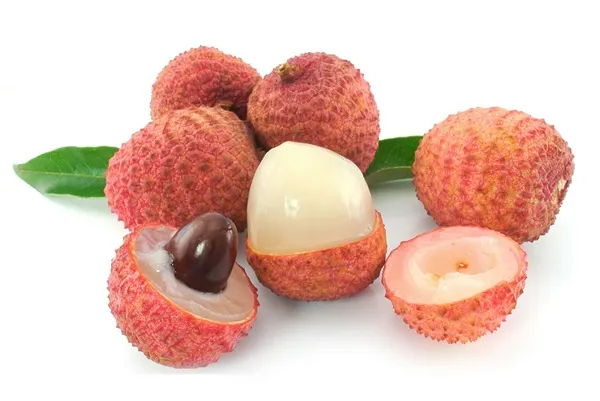Table of Contents
Jackfruit: The Colossal Tropical Wonder
Jackfruit (Artocarpus heterophyllus), native to South and Southeast Asia, is the world’s largest tree-borne fruit, weighing up to 55 kg (120 lbs). Revered as a "miracle crop," its sweet arils, versatile unripe flesh, and nutrient-dense seeds have fueled global interest. From vegan meat substitutes to traditional sweets, jackfruit bridges culinary innovation and cultural heritage, while Kerala, India, leads in creating over 100 innovative byproducts.
Global Varieties
Jackfruit varies by region and use:
- Black Gold (Malaysia): Small, sweet, and aromatic; ideal for desserts.
- Honey Gold (Australia): Bright yellow, honey-like flavor; low latex.
- Lemon Gold (Thailand): Tangy-sweet, firm flesh; popular in salads.
- NS1 (India): Dwarf variety, high yield, and disease-resistant.
- Tabouey (Sri Lanka): Large, fibrous, used for curries.
Dwarf Varieties:
- Cheena (Vietnam) and Singapore Jack (Malaysia) – Compact trees (10–15 ft) suited for home gardens.
Colors, Sizes & Flavor
- Colors: Exterior – green/yellow when unripe, golden-brown when ripe. Interior – yellow arils (ripe) or pale white (unripe).
- Sizes: 10–55 lbs; some Indian varieties exceed 80 lbs.
- Flavor:
- Ripe: Sweet, tropical blend of mango, banana, and pineapple.
- Unripe: Neutral, meaty texture (called "vegetable meat").
Nutritional Profile
- Vitamins: Rich in vitamin C, B6, and A.
- Minerals: Potassium, magnesium, calcium, iron.
- Fiber: 3g per 100g – aids digestion.
- Protein: 2–3g per 100g (higher in seeds).
- Glycemic Index (GI): Moderate (~50–60), but portion control advised for diabetics.
Health Benefits:
- Immunity Boost: High vitamin C and antioxidants.
- Heart Health: Potassium regulates blood pressure; fiber lowers cholesterol.
- Bone Strength: Magnesium and calcium enhance density.
- Blood Sugar Control: Slow-digesting carbs prevent spikes.
- Anti-Cancer: Phytonutrients like lignans and saponins.
Cultivation & Challenges
- Climate: Thrives in tropical/subtropical zones (64–90°F), 1,500–2,500mm annual rainfall.
- Soil: Well-drained, loamy soil (pH 6–7.5).
- Pollination: Monoecious flowers; wind and insects (e.g., beetles) assist pollination.
- Diseases:
- Fruit Rot (Rhizopus artocarpi): Post-harvest fungal disease.
- Jackfruit Leaf Spot: Caused by Phomopsis fungus.
- Borer Pests: Fruit flies and shoot borers.
Recent Production in India:
- Kerala, Tamil Nadu, Karnataka are top producers; Kerala alone contributes ~70% of India’s yield.
- 2023 Update: India’s jackfruit production rose 20% YoY, driven by Kerala’s "Jackfruit Mission" promoting value-added products.
Major Producers, Exporters & Importers
- Producers: India (1.4 million tons/year), Bangladesh, Thailand, Indonesia.
- Exporters: India (processed), Thailand (canned), Vietnam (frozen).
- Importers: U.S., EU, UAE, Canada (driven by vegan demand).
Byproducts & Kerala’s Innovation
Kerala pioneers 100+ jackfruit products:
- Food: Flour, chips, jams, ice cream, wine, biryani kits.
- Seeds: Roasted snacks, protein powder, flour (gluten-free).
- Latex: Natural adhesive, rubber alternative.
- Non-Food: Plywood adhesive, biofuel, animal feed.
Packaging:
- Fresh: Wax-coated for extended shelf life.
- Processed: Vacuum-sealed, canned, or frozen for export.
Culinary Uses
- Unripe: Shredded as vegan pulled "pork" in tacos, curries (e.g., kathal sabzi).
- Ripe: Eaten fresh, in smoothies, or desserts (halwa, custard).
- Seeds: Boiled, roasted, or ground into flour for baking.
Quick Recipes:
- Jackfruit Tacos: Sauté unripe jackfruit with BBQ sauce, serve in tortillas.
- Tropical Smoothie: Blend ripe arils, banana, coconut milk, and ice.
- Seed Curry: Boil seeds, simmer in tomato-onion gravy.
Storage & Freezing
- Fresh: Store whole fruit at room temperature for 3–5 days; refrigerate cut pieces for 1 week.
- Freezing: Blanch unripe chunks or freeze ripe arils in syrup for 6–12 months.
Home Farming & ROI
- Propagation: Grafting ensures quality; dwarf varieties yield fruit in 3–4 years.
- Care: Full sun, regular watering, and organic compost.
- Harvest: Fruit matures in 120–150 days; tap for hollow sound when ripe.
- ROI: A single tree yields 150–250 fruits/year. Commercial farms earn $2,000–$5,000/acre in Asia.
Western Acceptance
- Vegan Revolution: Jackfruit’s meaty texture is a hit in burgers, sandwiches (e.g., Upton’s Naturals, U.S.).
- Retail Growth: Sold in Walmart, Tesco, and Whole Foods as canned or frozen product.
Challenges
- Shortages: Erratic monsoons and labor-intensive harvesting affect supply.
- Latex Handling: Sticky sap complicates processing; use oil-coated knives to cut fruit.
Conclusion
Jackfruit’s unmatched versatility—from nourishing millions in Asia to fueling Western vegan trends—cements its status as a sustainable superfood. Kerala’s entrepreneurial spirit and India’s booming production highlight its economic promise. Whether grown in sprawling orchards or backyard gardens, jackfruit embodies resilience and abundance, offering a delicious solution to global food challenges.
Did You Know? Jackfruit trees can sequester 35–50 kg of CO₂ annually, making them climate-smart crops! In Kerala, jackfruit is called "Chakka" and is celebrated with festivals to reduce food waste.









